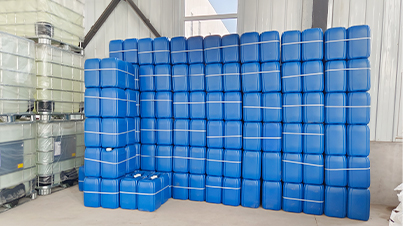Exploring the Use of Polyacrylamide Solutions in Water for Various Applications and Benefits
Polyacrylamide in Water Uses, Properties, and Applications
Polyacrylamide (PAM) is a water-soluble polymer resulting from the polymerization of acrylamide monomers. Due to its unique properties, polyacrylamide has gained significant attention in various industries, particularly in water treatment, agriculture, and cosmetics. Understanding the characteristics and applications of polyacrylamide in water can provide insights into its pivotal role in modern industrial processes.
Properties of Polyacrylamide in Water
Polyacrylamide is characterized by its high molecular weight, which can range from thousands to millions of daltons. This property contributes to its ability to form viscous solutions when dissolved in water. The polymer's solubility is largely influenced by its molecular structure, particularly the presence of hydrophilic amide groups that interact favorably with water molecules.
One of the most notable properties of polyacrylamide is its excellent thickening ability. When added to water, it increases viscosity significantly, making it useful in various formulations. Additionally, polyacrylamide can undergo hydrolysis, resulting in the formation of anionic, cationic, or nonionic forms, each tailored for specific applications. The choice of the ionic form depends on the intended use, as it can influence coagulation, flocculation, and sedimentation processes.
Applications in Water Treatment
The water treatment industry is one of the primary areas where polyacrylamide is extensively used. Its ability to enhance sedimentation and filtration processes makes it a valuable coagulant and flocculant. When added to wastewater, polyacrylamide promotes the aggregation of suspended particles, which facilitates their removal through settling or filtration. This property is crucial in ensuring clean water is returned to the environment, thereby protecting ecosystems and public health.
Moreover, polyacrylamide is employed in sludge dewatering processes. By aiding in the efficient removal of water from sludge, it reduces the volume of waste that requires disposal, thereby lowering treatment costs and improving resource recovery. As environmental regulations become increasingly stringent, the role of polyacrylamide in enhancing water treatment efficiency and sustainability cannot be overstated.
polyacrylamide in water

Agricultural Uses
In agriculture, polyacrylamide serves as a soil conditioner. When mixed with soil, it improves water retention and reduces erosion, which is particularly beneficial in arid and semi-arid regions. By enhancing the soil's physical structure, polyacrylamide promotes healthier crop growth and optimizes irrigation practices. The use of polyacrylamide not only aids in effective water usage but also supports sustainable agricultural practices by minimizing runoff and conserving soil moisture.
Additionally, polyacrylamide can be utilized in hydrogel formulations for seed coating, which enhances germination and reduces water stress on young plants. Its application in agriculture demonstrates the versatility of polyacrylamide in supporting food production and environmental sustainability.
Safety Considerations and Environmental Impact
While polyacrylamide is widely regarded as safe for various applications, there are important safety considerations, especially concerning its precursor, acrylamide, which is a known neurotoxin. Therefore, careful handling and adherence to safety guidelines are essential during manufacturing and application processes. The environmental impact of polyacrylamide has also been a topic of research, particularly its biodegradability and potential effects on aquatic ecosystems. Ongoing studies aim to ensure that its use does not lead to adverse environmental consequences.
Conclusion
Polyacrylamide in water offers significant advantages across various applications, particularly in water treatment and agriculture. Its unique properties, such as high viscosity and adaptability in ionic forms, make it an invaluable tool for improving operational efficiencies and supporting sustainable practices. As research continues to unravel new opportunities and address safety concerns, polyacrylamide is likely to remain a critical component in enhancing both industrial processes and environmental conservation efforts.
-
lk-319-special-scale-and-corrosion-inhibitor-for-steel-plants-advanced-solutions-for-industrial-water-systemsNewsAug.22,2025
-
flocculant-water-treatment-essential-chemical-solutions-for-purification-processesNewsAug.22,2025
-
isothiazolinones-versatile-microbial-control-agents-for-industrial-and-consumer-applicationsNewsAug.22,2025
-
scale-inhibitor-key-solutions-for-water-system-scale-preventionNewsAug.22,2025
-
organophosphonates-versatile-scale-inhibitors-for-industrial-water-systemsNewsAug.22,2025
-
scale-and-corrosion-inhibitor-essential-chemical-solutions-for-water-system-maintenanceNewsAug.22,2025





